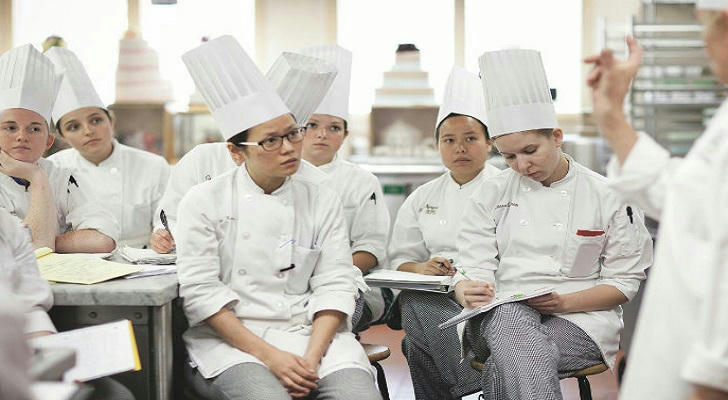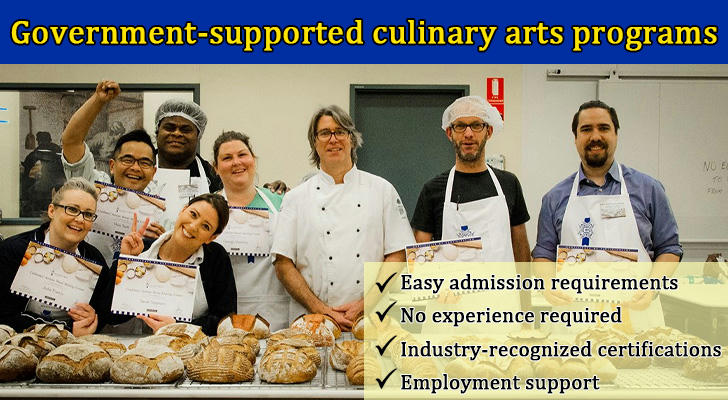Government-Supported Culinary Arts Training: Earn Certifications and Open the Door to Better Jobs
In the U.S., federal and state governments support workforce development through culinary arts training programs. These programs provide hands-on kitchen skills and lead to industry-recognized certifications, helping participants secure jobs or advance in the food service industry.
What Are Culinary Arts Training Programs?

Culinary arts training programs are government-supported vocational education initiatives delivered by community colleges, technical schools, or accredited training institutions. These programs combine hands-on training with culinary theory, focusing on essential areas such as food preparation, kitchen safety, and food service operations.
The programs are particularly suited for:
Low-income individuals or those in career transition
Young adults not currently in higher education
Veterans
Individuals facing employment barriers (e.g., single parents, formerly incarcerated individuals)
Those interested in entering or switching to the culinary field
Upon completion, participants typically receive recognized certifications that serve as valuable credentials for job placement or further education.
Key Advantages of the Programs
✅ Zero entry requirements
Most courses are open to adult learners. You only need to have basic communication skills and willingness to learn. No formal academic qualifications or relevant experience are required. You can apply even if you have no basic knowledge.
✅ Hands-On, Practical Focus
Courses are designed around real kitchen scenarios, including cooking, baking, plating, and food safety—ensuring students are job-ready.
✅ Flexible Schedules
Many training providers offer evening, weekend, or hybrid class formats to accommodate those balancing work, family, or other responsibilities.
✅ Certification-Driven Outcomes
Graduates receive certifications such as ServSafe Food Safety, Culinary Prep Technician Credentials, or Kitchen Assistant Certifications, all of which are well-regarded in the food service industry.
✅ Employment Support
Programs often collaborate with local restaurants, hotels, and food service providers, offering students internship opportunities, job leads, and referral letters.
What Certifications Can You Earn?
Depending on the program, participants can expect to receive credentials such as:
Food Handler Certificate
ServSafe Food Safety Manager Certification
American Culinary Federation (ACF) Entry-Level Certification
Culinary Skills Occupational Certificate
These certifications are widely accepted across states and can significantly boost employability in the food industry.

What Comes After Graduation?
Graduates are qualified for roles in:
Restaurant kitchens (prep cook, line cook, assistant chef)
Hotel or corporate cafeterias
School and senior care facility kitchens
Health-conscious cafes or quick-service restaurants
Food manufacturing or catering businesses
Some may also choose to pursue further education in culinary arts or hospitality management, or launch small food businesses such as catering services, food trucks, or shared-kitchen startups.
Success Stories
📍Case 1: Detroit Urban Culinary Career Program
In Detroit, Michigan, a workforce development initiative partnered with a technical institute to deliver culinary training. A 40-something man who had been out of stable employment for years completed the course, earned a ServSafe certification, and was hired as a prep cook at a local restaurant. Within three months, he was promoted to assistant kitchen manager and is now preparing to apply for a supervisor role.
📍Case 2: Atlanta Veterans Culinary Transition Program
In Georgia, a veteran-focused training program supported by the state’s Department of Veterans Affairs partnered with a technical college to deliver culinary education. A former Navy servicewoman completed the program and now works as a hot food preparation lead in an airport lounge kitchen. With multiple certifications and enhanced teamwork skills, she successfully transitioned to civilian employment.
How to Enroll
Step 1: Confirm Eligibility
Most programs accept adult applicants aged 18+, especially those seeking skill-building and employment. Some programs focus on low-income individuals, veterans, immigrants, or those with specific barriers to work.
Step 2: Research Available Programs
You can search for relevant programs through:
State or city workforce development websites (e.g., CalJOBS, WorkSource, NYC Workforce1)
Community colleges or technical school websites
Nonprofit training organizations (e.g., Job Corps, Goodwill Industries)
Federally funded training programs such as SNAP E&T or WIOA
Step 3: Prepare Application Materials
Commonly required materials include ID, proof of residence, income documentation, and education history (such as a high school diploma or GED). Some programs may ask for language or interest assessments.
Step 4: Attend Interviews or Assessments
Some programs conduct initial interviews to assess applicant fit and readiness.
Step 5: Receive Admission Details
Once accepted, students will receive schedules and program materials. Many programs also offer career support or internship referrals.
7. Conclusion
Government-supported culinary arts training is not just about learning how to cook—it’s a practical, credential-based pathway to personal advancement, professional development, and community engagement. With accessible entry, industry alignment, and recognized certifications, these programs offer individuals from all walks of life a chance to transform their careers through skill-building and opportunity.
